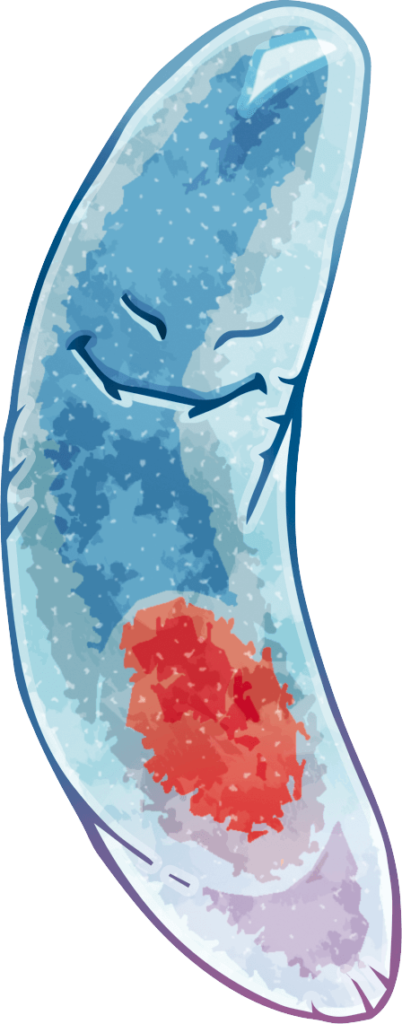Toxoplasma gondii

An arched strand
Toxoplasma gondii is a protozoan1 (from the Greek “proto” meaning first, primitive and “zoo” meaning animal), which is usually transmitted by exposure to cats. The name of this unicellular2 parasite is linked to its arched form (from the Greek “toxo” which means arc).
Unlike Bartonella henseale which is transmitted mainly by cat scratches and unlike Pasteurella multocida which is transmitted mostly by cat bites, Toxoplasma gondii is most often transmitted by suspension in the air of this protist3 when we clean the litter box or when we stroke a cat. Thus, infection most often transmitted through the air to lungs.
Toxoplasmosis
The infection, called toxoplasmosis4, is particularly problematic in pregnant women where the congenital infection can be dangerous to the fetus and may result in intracerebral calcifications. Toxoplasma gondii is also an opportunistic5 parasite, which may cause brain or the retina infections in severely immunosuppressed patients, for example in the setting of advanced AIDS.

- Black cards
- Akkermancia muciniphila
- Aspergillus fumigatus
- Bifidobacterium
- Candida albicans
- Chlamydia trachomatis
- Clostrioides difficile
- HBV
- HPV
- Human immunodeficiency virus
- Klebsiella pneumoniae
- Lactobacille
- Leishmania
- Leptospira interrogans
- Neisseria meningitidis
- Mumps virus
- Streptococcus pneumoniae
- Rickettsia prowazekii
- Measles virus
- Rubella
- Toxoplasma gondii
- Treponema palidum
- Chickenpox virus
- Vibrio cholera
- Zikavirus
